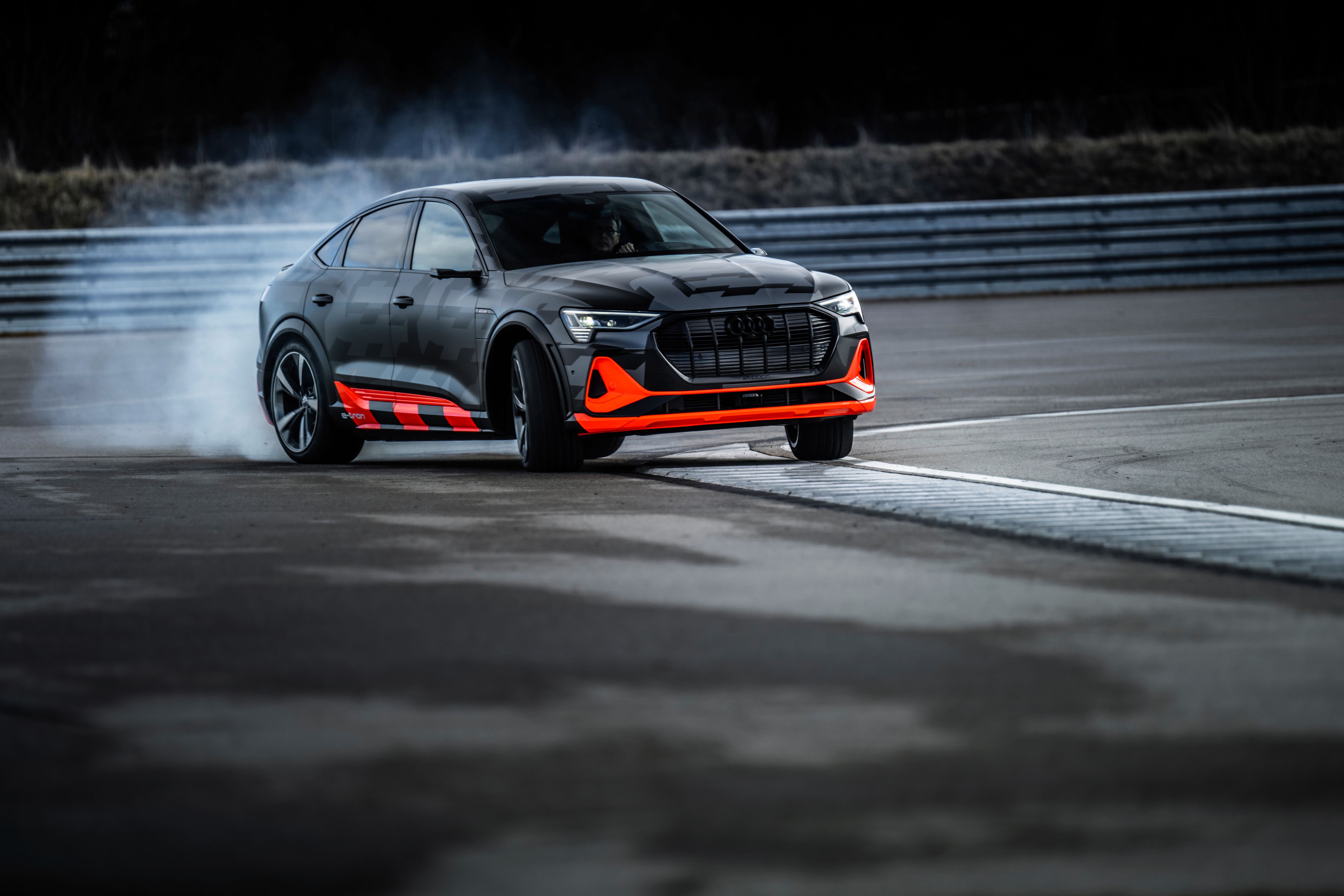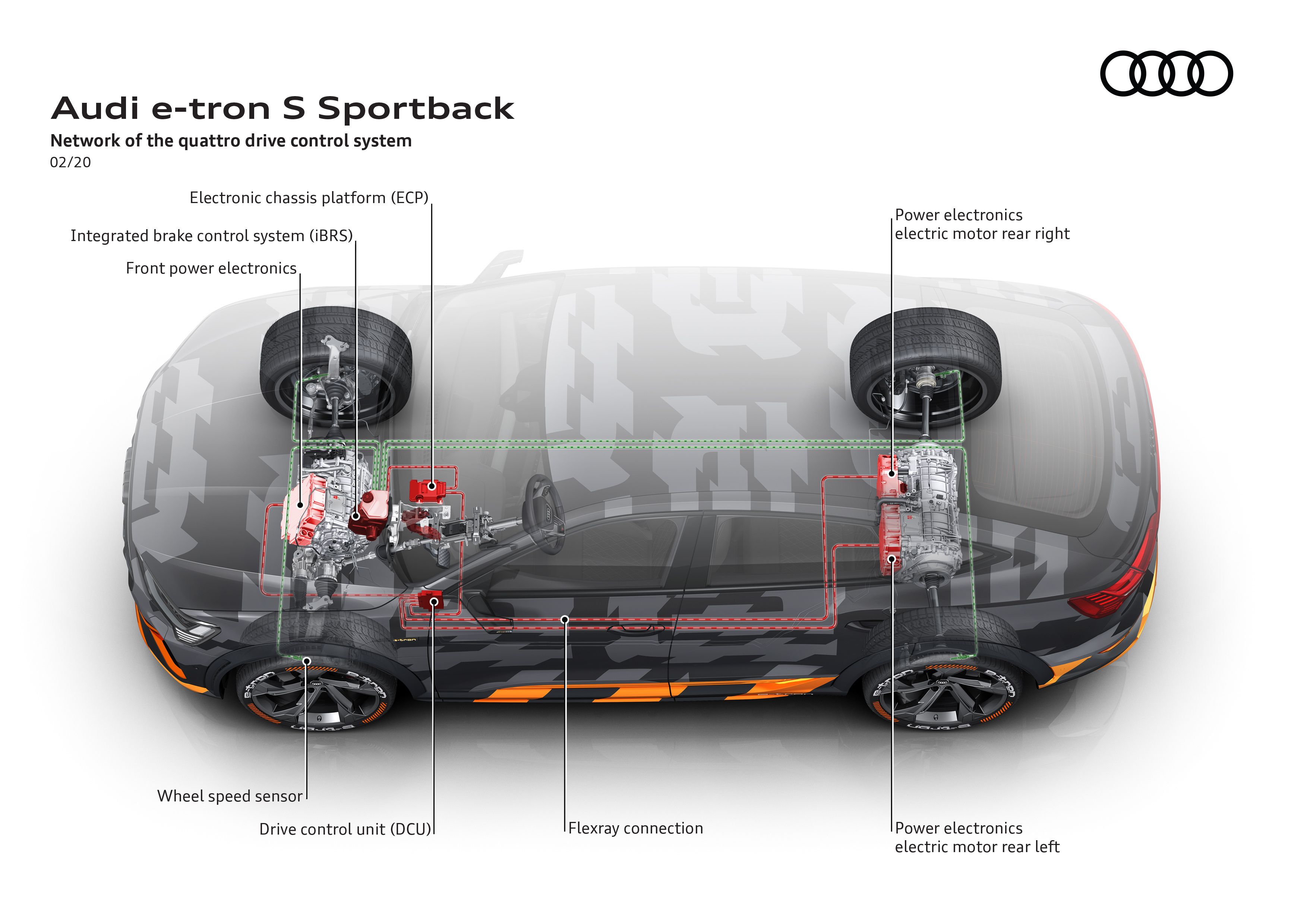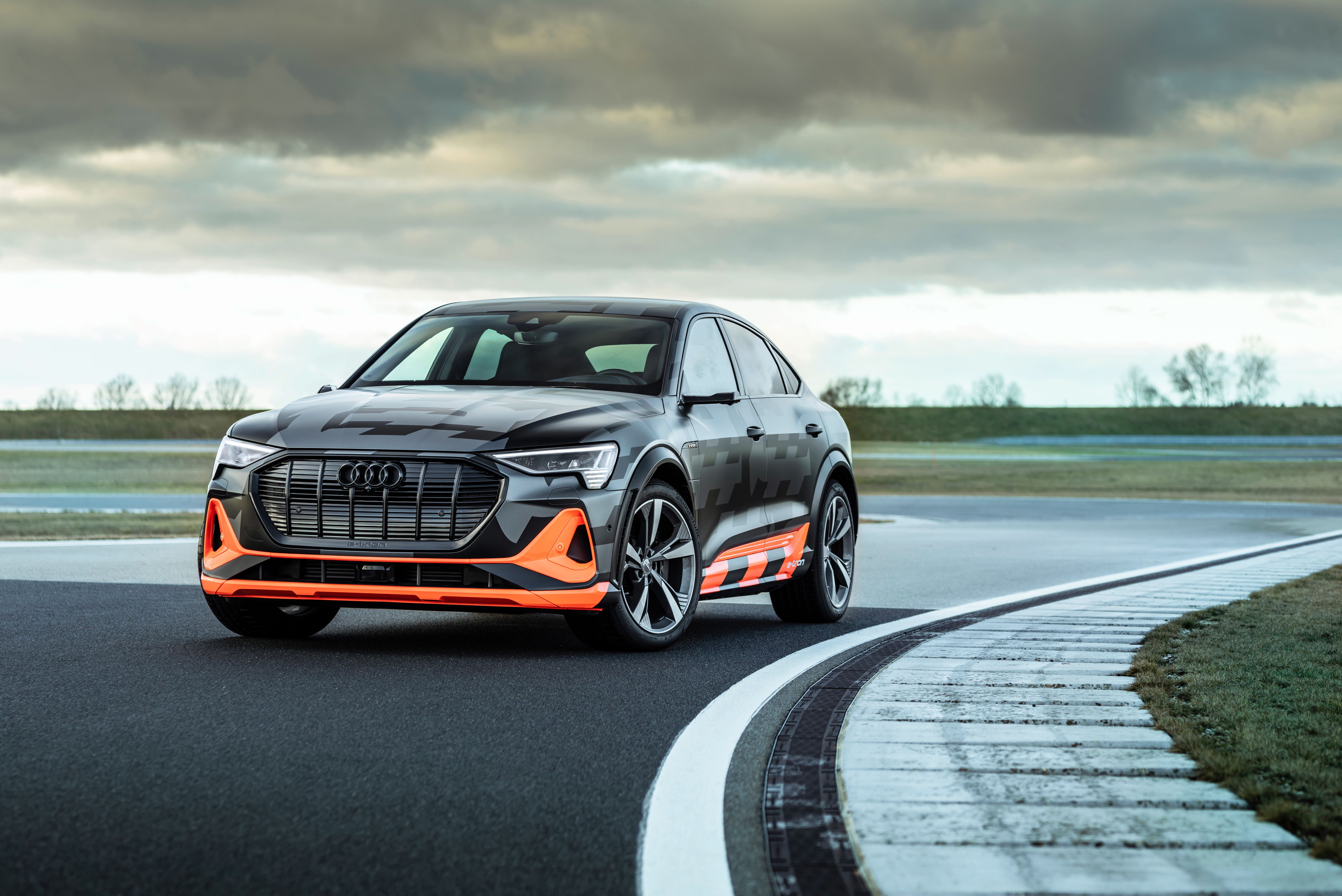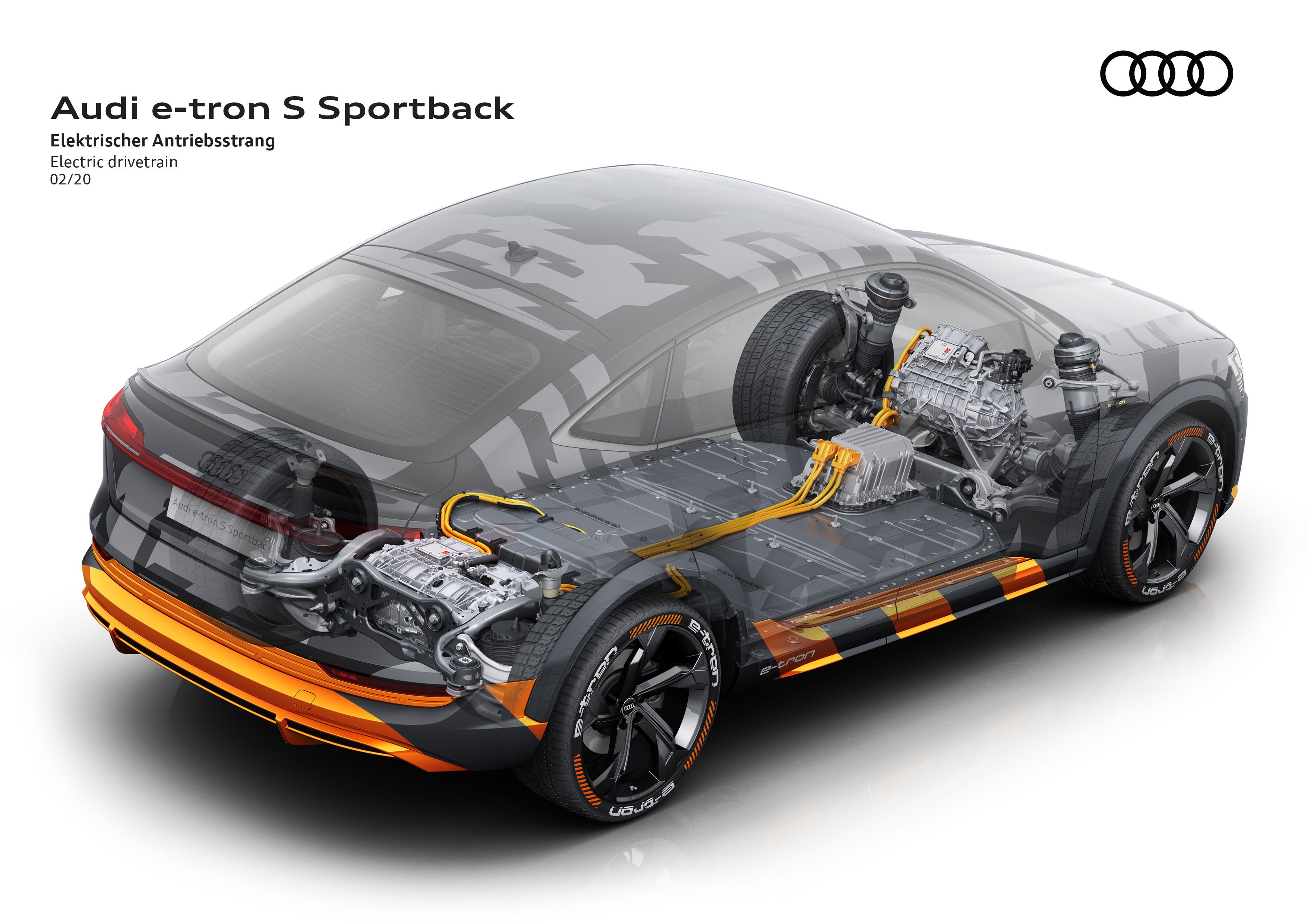Audi is looking to further refine and boost the powertrain found inside the e-tron, so it’s working hard on the so-called e-tron S, which gets a three-motor setup and better dynamics.
The German carmaker is hard at work developing the bumped-up powertrain that will underpin the incoming e-tron S models (regular and Sportback) and we’ve got to hold our hands up and admit they do look very good as far as performance is concerned.
The e-tron S is Pretty much about all-around performance
In boost mode, the e-tron S develops 370 kW and 973 Newton-meters of twist; the equivalent of 717.6 pound-feet of torque. That’s enough to zap from 0 to 100 km/h (62 mph) in 4.5 seconds up to a top speed of 210 km/h (130 mph). Outside of boost mode, the new e-tron S can still churn out 320 kW and 808 Newton-meters (596 pound-feet), which is still more than the highest-spec e-tron can deliver under boost.
|
Power |
370 kW |
|---|---|
|
Torque |
717 LB-FT |
|
0 to 100 km/h (62 mph) |
4.5 seconds |
|
Top Speed |
210 km/h (130 mph) |
The current e-tron lineup is derived into two guises: 55 quattro and 50 quattro. The former makes do with 300 kW and 664 Newton-meters (490 pound-feet) in boost mode and can sprint from 0 to 100 km/h (62 mph) in 5.7 seconds. Compared to what the e-tron S can pull off, it looks like the third motor does just enough to spice up the e-tron’s performance credentials.
Different Motor Positioning
In the Audi e-tron 55 quattro, the larger electric motor powers the rear axle. In the e-tron S, Audi repositioned it on the front axle, where it produces 124 kW (150 kW in boost mode). On the rear axle, there are now two smaller e-motors (identical in size and design), producing 196 kW (264 kW in boost mode) between them.
On a more practical note, the e-tron S can be charged from a 150-kW DC power source, so it’s able to replenish its battery pack from 5% to 80% in just half and hour. There’s no word of a change in battery size and capacity, which means the e-tron S will feature the same 95-kWh Li-ion pack that’s good for a max range of about 436 kilometers (271 miles).




